Freedom Fighters of India List (1857 to 1947)Undoubtedly, you must have heard stories about how India got independence and its struggle to achieve it. Let's get into it more. India was under the rule of the Britishers for almost 200 years, and there is no doubt that the period of those 200 years was a very tough time for the people of India. Despite the number of challenges and hardships, Indians never gave up and fought bravely for freedom, thus giving emergence to many freedom fighters. The freedom fighters, whom we will discuss one by one in this article, are the people who chose to stand against the British Empire to fight with them for the freedom of India. These freedom fighters were the real heroes who fought with all that they had just to set India free from the rule of the Britishers. They devoted their whole life and even sacrificed their lives to make India an independent country. In this article, we will learn about some of the most prominent freedom fighters of India who were active from 1857 to 1947. We must remember their efforts and contributions, as they are the ones who played a very significant role in shaping the history of India. So, let's dive in and discuss these brave individuals who fought for India's freedom: 1. Rani Lakshmibai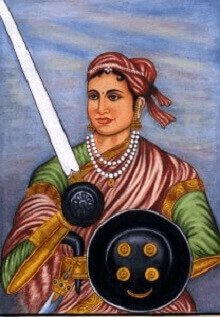
Freedom fighter Rani Lakshmibai was born on 19 November, and the year was 1828. The birthplace of Rani Laxmibai was Varanasi, a city in the State of Uttar Pradesh, India. We all know her by the name of "Rani of Jhansi", but there is one more name she used to be known by in her childhood: Manikarnika. The name of the father of Rani Lakshmibai was Moropant Tambe, who was deployed as court advisor to the Peshwa of Bithoor, and the name of the Ranilakshmibai's mother was Bhagirathi Bai, and she was a homemaker. As a child, Manikarnika was educated in many subjects, including archery, horse riding, and self-defense. She also received an education in Indian history, literature, and religion. In 1842, Manikarnika was married to the Maharaja of Jhansi, Raja Gangadhar Rao. After her marriage, she was given the name Lakshmibai. Unfortunately, her husband passed away in 1853, and their son died a few months later. This left Lakshmibai in a vulnerable position. Jhansi was one of the states affected when the British East India Company introduced the Doctrine of Lapse, which allowed them to annex territories without a legal heir. Lakshmibai refused to give up her kingdom and led her people in a fight against the British. She played a vital role in the Indian Rebellion of 1857. Rani Lakshmibai fought fiercely for Jhansi's independence and was known for her bravery and determination. She even trained an army of women to fight alongside her. Despite facing overwhelming odds, she never gave up. Sadly, Lakshmibai was killed in battle on June 18, 1858. She was fighting against the British in Gwalior at the time. Her death greatly affected the Indian independence movement, but her legacy lives on. Today, Rani Lakshmibai is remembered as a hero and an icon of Indian independence. 2. Mangal Pandey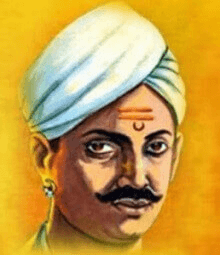
Mangal Pandey was born on July 19, 1827, in Nagwa, a village in Uttar Pradesh, India. His father, Divakar Pandey, was a farmer, and his mother, Abhiyadevi, was a housewife. Mangal was the eldest son of his parents and had two younger brothers. Mangal Pandey joined the British East India Company's army in 1849 and was posted to the 34th Bengal Native Infantry regiment. He received his training in Barrackpore, West Bengal, where he met other Indian soldiers who were also discontent with British rule. In 1857, Mangal Pandey became a central figure in the Indian Rebellion against the British East India Company. Many remembered him for his role in the Barrackpore Mutiny, which took place on March 29, 1857. Mangal Pandey had a very interesting story as a sepoy in the 34th Bengal Native Infantry. During that time, there were rumors that cow and pig fat was being used in rifle cartridges, and due to this, Mangal Pandey refused to use those cartridges. The reason behind not using cartridges by Mangal Pandey was that greasing cow and pig fat in cartridges was against the religious beliefs of both Hindus and Muslims. The rebellion of Pandey, which was against his British superiors, resulted in a much larger mutiny in the regiment, which quickly spread to other units as well. This was the mutiny that marked the start of the Indian Rebellion of 1857; it is also called the First War of Independence. But a very unfortunate incident took place, and the Britishers captured Mangal Pandey, and he was sentenced to death by hanging. The date on which he was executed or hanged was April 8, 1857. This all took place in the presence of his fellow soldiers. But it should be noted that despite this unfortunate incident, the fight for India's independence did not stop. This incident inspired many others to join the rebellion started by Mangal Pandey for the freedom of the country. 3. Tantia Tope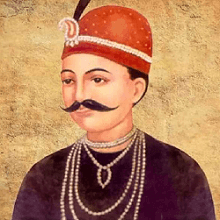
The next freedom fighter on our list is a brave Indian fighter, Tantia Tope (also written as Tatya Tope). He played a very important role during the struggling days of India for its independence. It was the year 1814 when Tantia Tope was born; the village was Panderpur which is present today in the state of Madhya Pradesh, India. Tantia Tope's father was a wealthy landowner named Pandurang Rao Tope. His mother's name was Rukhma Bai. Tantia Tope was a bright child from childhood who was always eager to learn new skills. Tantia Tope's father was the educator for Tantia Tope as he only received his education from his father. He also learned other skills, like horse riding and warfare, from the local soldiers. It is to be noted that Tantia Tope was a close aide of Rani Lakshmibai. He was one of the key leaders of the Indian Rebellion of 1857. Nana Sahib, an adopted son of Peshwa Baji Rao II, appointed Tantia Tope for the post of general of the rebel army. Tantia Tope fought many battles against the Britishers; his military strategies and leadership skills proved very important in those wars. Britishers captured Gwalior in 1858, and because of that, Tantia Tope and other rebel leaders were forced to retreat. Still, Tantia Tope's fight for the freedom of India did not get stopped, and he also waged guerrilla warfare against the forces of the Britishers. He traveled to many parts of India and fought battles against the Britishers, but unfortunately, he was captured by British forces in 1859. Later, Tantia Tope, who was 45 years old at that time, was sentenced to death, and the execution was held on April 18, 1859. Despite his valiant efforts, Tatya Tope's vision of India as a country free from the British remained a dream for him during his lifetime. But his contributions and efforts will always be remembered whenever someone talks about freedom fighters of India. 4. Bal Gangadhar Tilak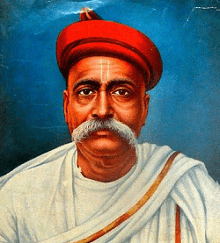
Bal Gangadhar Tilak, a freedom fighter and also a social reformer, who was born in a middle-class family in Ratnagiri, Maharashtra, played a very major role in the struggle for India's independence. He is also known as Lokmanya Tilak and was born on July 23, 1856. His father's name was Gangadhar Tilak, and he was a school teacher by occupation. The name of his mother was Parvatibai Gangadhar, and she served as a housewife. Tilak was a bright and intelligent child since childhood and completed his education at a college in Pune named Deccan College. Later, Tilak became a journalist and started communicating India's history and rich culture through his writing skills to spread awareness among the citizens. He was one of the great supporters of the Swadeshi movement and advocated for the use of Indian goods and products. Tilak was also a vocal critic of British rule, and through his platform, he used to inspire the Indians to stand up and fight for their rights. He used to believe in the power of people, and therefore he encouraged many people to fight for their freedom with unity. Tilak played a major role in the organization of the Indian National Congress and was one of the leaders who participated in the struggle for freedom. A slogan that became very popular during that time and was used widely as a rallying cry for the freedom fighters was: "Swaraj is my birthright, and I shall have it!" It was given by none other than Bal Gangadhar Tilak himself. Tilak was the organizer of several mass movements like the Home Rule movement, and the movement's demand was self-governance for India. His dedication to an independent India landed him in jail several times. Still, despite several arrests and imprisonment, he did not give up his idea of an India free from British rule. Several years of life of Tilak were spent in prison only, and there was a time when he was sentenced to imprisonment for six years in Mandalay, Burma. He still used to inspire many others, even from prison, and did not give up till his last breath. During his last time, his health started deteriorating, and because of that, he died on August 1, 1920. The age at which he passed away was 64. He was so popular and loved by the people that the whole of India mourned his death. 5. Lala Lajpat Rai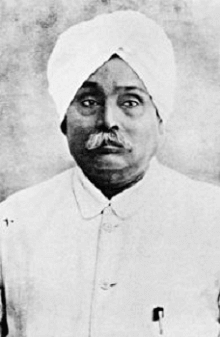
Lala Lajpat Rai was a social reformer and a renowned freedom fighter. He was popularly known as Punjab Kesari. Rai was born in a small village in Punjab named Dhudike. His mother's name was Gulab Devi, a housewife, whereas his father was Munshi Radha Kishan, a teacher by profession. After completing his education, Lala Lajpat Rai also became a teacher, following in his father's footsteps. However, he soon realized that he was born for something bigger, which was to contribute to India's struggle for freedom. Rai dedicated his whole life to the cause of India's Independence. Following that, he joined Congress and became an effective member of it. His role in organizing several significant mass movements is always remembered. The non-Cooperation movement and the Swadeshi movement were the two mass movements that played a very major role in the independence of India, and Lala Lajpat Rai organized both these movements. Rai advocated for the importance of education and social reforms for a country and the people. He used his platform as a teacher and journalist to spread awareness about these too. He also criticized the British rule in India and used to speak against it often. He also advocated for the rights of Indians. Like other freedom fighters we discussed above, Rai also had to face several arrests and imprisonment, but he never wavered in his commitment to the cause. While leading a peaceful protest against the British Government's Simon Commission in Lahore in 1928, he was brutally beaten in a lathi charge by the police. Rai suffered severe injuries in the Lathi charge, which resulted in the cause of his death on November 17, 1928. Rai was 63 years old when he died. Rai's death sent shockwaves throughout the country and sparked widespread protests against the British government. His contributions to the Indian independence movement continue to inspire generations of Indians today. 6. Bipin Chandra Pal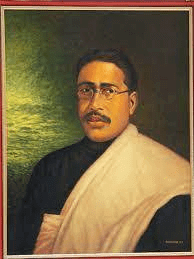
Bipin Chandra Pal was an Indian Nationalist and renowned freedom fighter. He is also known as the 'father of revolutionary thoughts'. Pal was born in the year 1858 on November 7. He was born in a middle-class family in Sylhet, Assam. His father's and mother's name was Baladev Pal and Bibi Sundari Devi, respectively. His father was a government official by profession, whereas his mother was a housewife. Pal was a very bright student during his childhood, and he completed his graduation in Philosophy from the University of Calcutta. Later, after completing his studies, he became a teacher and joined National Indian Congress. Pal was a critic of the increase in the influence of Western culture on Indian society as he used to believe that the culture of India is much more powerful and beautiful than any other culture. Pal was part of the 'Lal-Bal-Pal' trio and played an important role in India's freedom from struggle. The other two of the trio were Lala Lajpat Rai and Bal Gangadhar Tilak. Pal was also a firm believer in the power of mass movements and organized many protests and boycotts against British rule in India. Pal was a teacher as well as a journalist, and he also used his platforms to make the people aware of the importance of Indian culture and also the importance of India being free from British rule. 'Bande Mataram' and 'New India' were the two newspapers of which Pal was the editor. Pal's speeches and writings also influenced people on a large scale in shaping the nationalist movement in India. In 1920, his health conditions started deteriorating, and in 1932, he suffered a severe stroke which resulted in his death of Pal. Pal took his last breath on May 20, 1932, at 73. 7. Dadabhai Naoroji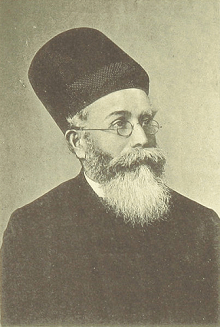
Dadabhai Naoroji was a great economist and a prominent Indian freedom fighter. Naoroji was born on September 4, 1825, in Mumbai, India. His father was a priest in the Zoroastrian community, and his mother was from a very wealthy Parsi family. Naoroji received his early education from a college named Elphinstone College which is located in Mumbai, Maharashtra. Later, he moved to England, where he studied at the University of London to receive a degree in mathematics from there. He was also the first Indian to receive a degree in mathematics from the University of London. When his education was completed there in London, he returned to India, became a professor here, and started teaching at the University of Mumbai. It was the year 1870 when his political career started. He joined Indian National Congress that year. He was also elected to the post of President of the Indian National Congress in the following years: 1886, 1893, and 1906. Naoroji, during his whole political career, fought for Indian independence as he firmly believed in Indian self-rule. He also advocated for Indian industrialization and was also known for his strong stance on economic nationalism. Naoroji also authored several books based on economics and politics. One of his famous books was "Poverty and Un-British Rule in India". In this book, he argued that British Colonialism should be held responsible for making India poverty-stricken. Naoroji died on June 30, 1917, in Bombay, India, at 91. His death was mourned by people all over India, and his contributions to the Indian independence movement were widely recognized. Naoroji's legacy lives on today as a symbol of the fight for Indian self-rule and economic independence. 8. Gopal Krishna Gokhale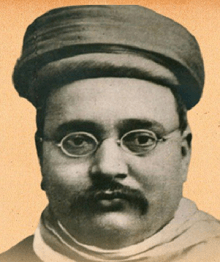
Gopal Krishna Gokhale was born in a small village in Maharashtra, India, on May 9, 1866. His father was a schoolteacher in the same village, whereas his mother was a housewife. Gokhale had a keen interest in education since his childhood. Gokhale was a true nationalist and was a prominent leader of the Indian National Congress. He was not only a great freedom fighter but also a social reformer, writer, and political thinker. He received his early education in Bombay and Calcutta. Later, Gokhale went to England to study law. When Gokhale completed his studies, he returned to India and joined Ferguson College, Pune, as a history and political economy professor. Later, he also joined Indian National Congress and played a major role in the struggle for freedom in India. Gokhale believed in the principles of non-violence and constitutional agitation. He was an advocate of education and believed that education was the key to India's progress. He founded the Servants of India Society, which aimed to promote education, sanitation, and social welfare in India. Gokhale mentored many Indian nationalist leaders, including Mahatma Gandhi, who described him as his political guru. He was known for his diplomatic skills and played a crucial role in negotiating the Morley-Minto Reforms, which gave more representation to Indians in the government. Unfortunately, Gokhale's health deteriorated rapidly, and he passed away on February 19, 1915, at 48. His death was a significant loss for the Indian nationalist movement, and he is now remembered as one of the most important figures in the Indian independence movement. 9. Mahatma Gandhi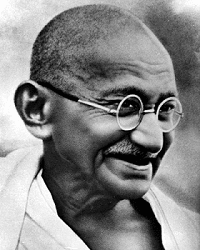
Mahatma Gandhi, whose full name was Mohandas Karamchand Gandhi, was born on October 2, 1869, in a small coastal town named Porbandar, which is situated in present-day Gujarat. His father named, Karamchand Gandhi, was a statesman, whereas his mother named, Putlibai, was a very religious woman. Gandhi received his early education in India and studied law in the United Kingdom. We also know him as the "Father of the Nation" in India due to his major and important role in the country's struggle for independence from British colonial rule. He advocated for non-violent civil disobedience to achieve political and social change, and his ideas and philosophy continue to inspire movements for peace and justice worldwide. Gandhi's first major involvement in the independence movement came in 1915 when he returned to India from South Africa and began organizing protests and campaigns against British rule. He led the Indian National Congress, a political party that fought for Indian independence, and used peaceful civil disobedience and hunger strikes to make his demands heard. One of Gandhi's most famous campaigns was the Salt March in 1930, during which he and thousands of supporters marched 240 miles to the Arabian Sea to protest the British monopoly on salt production. The campaign gained international attention and helped to galvanize the independence movement further. Gandhi's dedication to non-violent resistance and advocacy for religious tolerance and social justice made him a beloved figure in India and worldwide. He continued to work towards independence until 1947, when India finally gained its freedom. Tragically, just months after independence, Gandhi was assassinated by Nathuram Godse, who was a Hindu nationalist and opposed Gandhi's views on religious tolerance. Gandhi's legacy inspired generations of activists and advocates for peace and justice worldwide. His ideas of non-violent resistance and civil disobedience have influenced many social and political movements, including the American civil rights movement led by Martin Luther King Jr. 10. Jawaharlal Nehru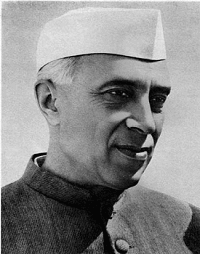
Jawaharlal Nehru took birth on November 14, 1889, in Allahabad, Uttar Pradesh, India. His father, Motilal Nehru, was a wealthy lawyer and a prominent leader in the Indian independence movement. His mother, Swaroop Rani Nehru, was an educated woman from a wealthy Kashmiri Brahmin family. Nehru's parents placed great importance on education, and due to this, he went to some of the best schools in India and England. Nehru's interest in politics was sparked during his time studying law in England, where he was exposed to the ideas of socialism, democracy, and nationalism. He became involved in the Indian nationalist movement and returned to India to become one of the most important leaders in the fight for independence. Nehru played a major role in India's independence movement, working closely with Mahatma Gandhi to lead non-violent protests and civil disobedience campaigns against British colonial rule. He was imprisoned several times for his activism and was prominent in negotiations with the British government for India's independence. After India's independence in 1947, Nehru became the country's first prime minister, serving until he died in 1964. During his time in office, he implemented policies to modernize India and improve the lives of its citizens, including establishing a planned economy and a nonaligned foreign policy. Nehru's death in 1964 was a great loss to the Indian nation. He passed away due to a cardiac attack. Nehru remains an important figure in Indian history, remembered for his role in the independence movement and his contributions to India's development as a modern nation. 11. Vallabhbhai Patel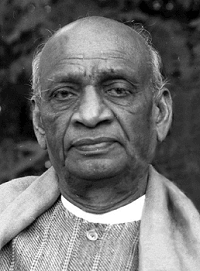
The next freedom fighter of India on our list is Vallabhbhai Patel, who was called the Iron Man of India. Patel was one of the key figures who played a major role in India's freedom struggle. He was born in a family of farmers in Gujarat on October 31, 1875. Jhaverbhai Patel, a farmer by occupation, was the father of Patel, and Patel's mother, Laad Bai, was a housewife. The primary education of Vallabhbhai Patel was completed in his hometown. After completing his primary education, Patel moved to Ahmedabad, Gujarat, to pursue further studies. Later, Patel moved to England to study law, and in the year 1913, when he completed his law degree, he returned to India and started practicing law here. Patel played a very important and effective role in India's movement for independence. Patel was close to Mahatma Gandhi as his associate, and his role in Salt Satyagraha and Quit India Movement cannot be forgotten. He became the first Deputy Prime Minister and Home Minister of Independent India. His biggest achievement was that he managed to integrate around 500 princely states into the newly formed independent India. This commendable job done by Patel was incredible in itself. It helped India bring these princely states under the Indian Union, which unified India as a single nation. Sadly, Vallabhbhai Patel suffered a heart attack at 75, and because of this, he passed away on December 15, 1950. Patel's death was mourned by people all over India as it was a huge loss for the nation. The Sardar Patel National Memorial Museum, located in Ahmedabad, is dedicated to his memory and serves as a reminder of his contributions to India's freedom struggle and unity. 12. Subhash Chandra Bose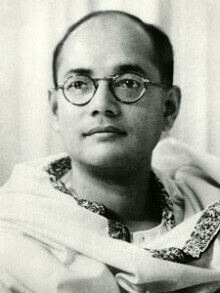
Subhash Chandra Bose was born in Cuttack, Odisha, and was from a well-educated family. It was January 23, 1897, when Subhash Chandra Bose was born. We Indians know him by one more name, which is very popular, i.e., Netaji. His father's name was Janakinath Bose, and he was a professional lawyer, whereas his mother's name was Prabhavati Devi. His mother was a very religious woman, and this part played a very significant role in the upbringing of Netaji. He was a bright student since his childhood and completed his graduation from Calcutta University. The teachings of Swami Vivekananda and Mahatma Gandhi influenced him a lot. In 1921, Netaji joined Indian National Congress, too, as he was deeply influenced by Mahatma Gandhi then. After some time, he became a very important and effective leader of the Indian National Congress. Bose believed that India should fight for its independence even if it had to choose force and violence against the British. But, thoughts of Gandhi were exactly the opposite of it; he was not a supporter of violence and believed that independence could be achieved without violence. This non-violent approach of Gandhi to get freedom was criticized by Bose. Bose chose his path, formed the All India Forward Bloc in 1939, and started his attempts to make Indian National Army (INA) so that he could fight against the Britishers and throw them out of India. During World War II, he allied with the Japanese and led the INA in battles against the British in Burma and Northeast India. Despite his efforts for the Indian independence movement, Bose's life was cut short. On August 18, 1945, Bose died in a plane crash in Taipei, Taiwan. However, many conspiracy theories surrounding his death persist. Bose was a passionate and charismatic leader who inspired many Indians to fight for their freedom. He will always be remembered as one of the greatest patriots and freedom fighters in Indian history. 13. Sarojini Naidu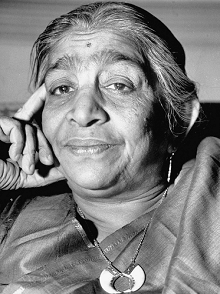
The next freedom fighter of India on our list is Sarojini Naidu, also known as the Nightingale of India. She was not just a freedom fighter but an amazing poet also. She was born in Hyderabad on February 13, 1879. Her father, Aghorenath Chattopadhyay, was a scientist, educator, and philosopher, whereas her mother, Barada Sundari Devi, was a poet. Sarojini had a keen interest in literature and writing from a young age. She did not go to any school for her early education and was homeschooled by her parents with a quality education. Her role in India's struggle for freedom was very important as she used her charisma and eloquence to encourage people and make them aware of why there is a need to fight for the freedom of their country together. She was a member of the Indian National Congress, where many leaders used to appraise her work. She was a very eloquent and powerful speaker. She used this quality to encourage people all over India to unite and fight for their freedom. She also faced imprisonment several times like our other freedom fighters, as she was also a part of the Non-Cooperation Movement and Civil Disobedience Movement. As she was a renowned poetess, some of her works got published too, which includes "The Golden Threshold", "The Bird of Time", and "The Broken Wings". We can see the immense love of Naidu for her country in her poetry. Her poetry often portrayed her deep concern for the bad condition of people in the nation. She is known as "The Nightingale of India" for her contributions to India's independence struggle and her literary achievements. She also became the first woman president of the Indian National Congress in 1925. Her achievements continued further, and later in 1947, she was appointed governor of the United Provinces, present-day Uttar Pradesh. Sadly, Sarojini Naidu's health started deteriorating in the later years of her life, and she passed away on March 2, 1949, at 70. Her death was a great loss to India, as she had dedicated her entire life to the cause of Indian independence and had left an indelible mark on the country's cultural and political landscape. 14. Rajendra Prasad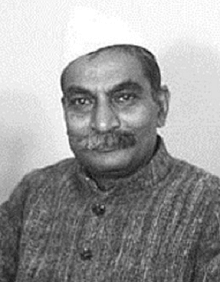
Rajendra Prasad was affectionately known as Rajan Babu and was a key figure in India's Independence Movement. We should know that he was also the first President of Independent India. He was from Bihar and was born in Zeradei, which is in Bihar. He was born on December 3, 1884. His father was Mahadev Sahai, and his mother was Kamleshwari Devi. Prasad's father was a Sanskrit scholar, and he taught Sanskrit to his son, also. Prasad later went to Calcutta for further education and was admitted to the Presidency College of Calcutta. He earned his MA in Economics from the University of Calcutta. When Prasad completed his studies, he also started practicing as a lawyer at Calcutta High Court. He actively participated in the movement for India's Independence and became a prominent member of the Indian National Congress. He also participated actively in many events like Salt Satyagraha and Quit India Movement. He, too, got arrested several times for his activism. India became a republic in 1950, and Rajendra Prasad was elected the first president of independent India. He got the opportunity to serve the country as a President for two terms, i.e., from 1950 to 1962. He was known for his simplicity, honesty, and dedication to the welfare of the people. When Prasad took retirement from politics, he returned to his village in Bihar and devoted himself to social work, education, and writing. Sadly, he passed away on February 28, 1963, at 78, due to a heart attack. Rajendra Prasad was a man of great integrity and a true patriot. His contributions to the Indian independence movement and his leadership as the first President of independent India will always be remembered and celebrated. 15. Bhagat Singh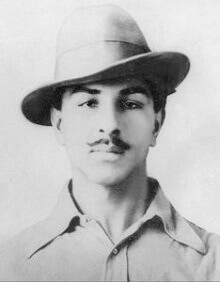
It would be unfair if we talked about the freedom fighters of India and did not include the name of Bhagat Singh. Bhagat Singh was a great freedom fighter and a revolutionary. Bhagat Singh was born in the year 1907 in the province of Punjab. Not just Bhagat Singh but his father and mother were also involved in the struggle for the independence of India. His father's name was Kishan Singh, whereas his mother was Vidyavati. Bhagat Singh was a well-educated person and studied at National College, which was in Lahore. The nationalist ideas of Mahatma Gandhi inspired him so much. Therefore, he, too, joined the Indian National Congress when he was just a teenager. But, even though Mahatma Gandhi's ideas influenced him, his approach to making India an independent country was very different from that of Gandhi. Bhagat Singh used to believe that independence could only be achieved through violence, and therefore he carried out several attacks against British officials. He fought very bravely against British colonial rule. His involvement in the Lahore Conspiracy case led him and his comrades to face a death sentence. Bhagat Singh's role in the Indian independence movement was crucial. He was a true martyr who sacrificed his life for the nation's sake. His actions inspired many people, and his death galvanized the Indian freedom struggle. Bhagat Singh was hanged by the British authorities on March 23, 1931, at the age of 23. He faced his death bravely, smiling and chanting revolutionary slogans until his last breath. Bhagat Singh's sacrifice and fight for India's freedom will be pivotal in India's history. 16. Chandra Shekhar Azad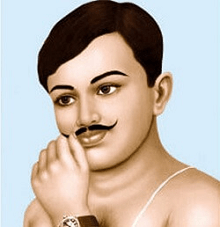
Chandra Shekhar Azad, popularly known as Azad, was an Indian revolutionary who played an important role in India's struggle for independence. He was born on July 23, 1906, in Bhavra, a small village in present-day Madhya Pradesh. His parents were Sitaram Tiwari and Jagrani Devi. Azad's father was a farmer, and his mother was a housewife. From a young age, Azad was deeply influenced by the nationalist movements and the struggle for India's freedom. He was a brilliant student and completed his education in Sanskrit and Persian at Kashi Vidyapeeth in Varanasi. However, he left his studies midway to join the revolutionary movement. Azad became an active member of the Hindustan Socialist Republican Association (HSRA), which aimed to overthrow British rule in India. He was known for his sharp mind and quick reflexes. He played a key role in several revolutionary activities, including the Kakori Train Robbery and the shooting of British officer JP Saunders in Lahore. Azad was known for his fierce determination and uncompromising attitude toward the British rulers. He was always on the run, and the British authorities launched an extensive chase to capture him. However, he remained elusive and managed to evade capture for several years. On February 27, 1931, Azad was surrounded by British police in Alfred Park, Allahabad. Rather than surrendering, he fought bravely and died by suicide, firing his last bullet into his head. He was just 24 years old at the time of his death. Chandra Shekhar Azad's legacy symbolizes resistance and courage in India's struggle for independence. His stories even inspire many young people in India today who continue to fight for justice and equality in a free and democratic India. 17. Sardar Udham Singh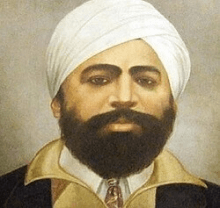
Sardar Udham Singh was born on December 26, 1899, in a small village called Sunam in Punjab, India. His parents were peasants, and his father's name was Tahal Singh. He lost his parents at a young age and was brought up by his elder brother. Despite the lack of formal education, Sardar Udham Singh was keenly interested in reading and learning about the world around him. He was deeply influenced by the Jallianwala Bagh massacre in 1919 and vowed to seek revenge for the atrocities committed against his people. Sardar Udham Singh played an active role in the Indian freedom struggle and was associated with revolutionary groups such as the Ghadar Party and the Hindustan Socialist Republican Association. He went to the United States in 1920 and was involved in spreading awareness about the Indian freedom struggle among the Indian diaspora. Sir Michael O'Dwyer, the former Lieutenant Governor of Punjab, who was responsible for the Jallianwala Bagh massacre, was assassinated by Sardar Udham Singh on March 13, 1940. Because of this, Sardar Udham Singh was captured and sentenced to death by the court. He was hanged on July 31, 1940, at Pentonville Prison in London. Sardar Udham Singh's legacy lives on to this day as a symbol of resistance and courage against colonial oppression. His sacrifice and dedication to the cause of Indian independence continue to inspire people across the country. 18. Alluri Sitarama Raju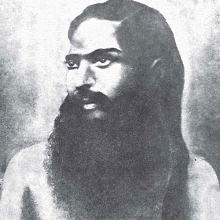
Alluri Sitarama Raju was a revolutionary freedom fighter from India who fought against British colonial rule. He was born on July 4, 1897, in a small village called Pandrangi in Andhra Pradesh. His father, Venkata Rama Raju, was a farmer, and his mother, Suryanarayanamma, was a housewife. Alluri Sitarama Raju did not attend any school or college for his education. His father and the elders of his village were the ones by whom he was taught. He, too, was very influenced by the ideas of Mahatma Gandhi and the non-cooperation movement. But later, he became disillusioned with the non-violent approach and turned to armed resistance. Raju played a key role in the Rampa Rebellion, also known as the 'Rampa Chodavaram Rebellion', a tribal uprising against the British in the Visakhapatnam Agency area. He formed a guerrilla army of tribals and fought against the British, attacking police stations, cutting telegraph wires, and disrupting the administration. Alluri Sitarama Raju became a folk hero in Andhra Pradesh for his brave and daring acts. He was known for his fearless and uncompromising attitude toward the British. However, his rebellion was short-lived, and the British eventually captured and killed him on May 7, 1924. Alluri Sitarama Raju remains an important figure in the Indian independence movement and is remembered for his bravery and sacrifice. He symbolizes the resistance against British Colonialism in India, and his legacy inspires people to fight for their rights and freedom. 19. Khan Abdul Ghaffar Khan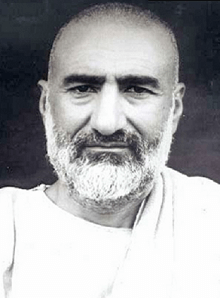
Khan Abdul Ghaffar Khan was a political and spiritual leader from the North-West Frontier Province of India, now known as Khyber Pakhtunkhwa, Pakistan. He was born on February 6, 1890, in the village of Utmanzai in the Charsadda district, North-West Frontier Province, British India. His father, Bahram Khan, was a landowner and a chief in the Afridi tribe, while his mother, Roshanai, was a housewife. Khan Abdul Ghaffar Khan received his early education in a mosque and then studied at Aligarh Muslim University. Mahatma Gandhi's non-violent movement inspired him, and he became a close ally of the Indian National Congress during the Indian Independence movement. He founded the Khudai Khidmatgar ("Servants of God") movement, a non-violent resistance movement against the British Empire. Khan Abdul Ghaffar Khan was known as the "Frontier Gandhi" due to his close association with Mahatma Gandhi and his non-violent philosophy. He played a key role in the Indian independence movement and was imprisoned by the British multiple times. He spent more than 30 years in jail in India and Pakistan. After India's independence in 1947, Khan Abdul Ghaffar Khan became an important figure in the politics of Pakistan. He strongly advocated Pashtun autonomy and opposed the country's integration with India. In 1962, he founded the National Awami Party, a major political force in Pakistan. Khan Abdul Ghaffar Khan died on January 20, 1988, in Peshawar, Pakistan, at 97. Thousands of people attended his funeral, and he was buried in his family's graveyard in Jalalabad, Afghanistan. Despite facing numerous hardships and imprisonment, Khan Abdul Ghaffar Khan never lost his faith in non-violent resistance and remained committed to the cause of freedom and social justice until his last breath. 20. Annie Besant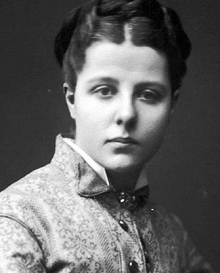
Annie Besant was a remarkable woman born in London, England, on October 1, 1847. Her father, William Wood, was a doctor, and her mother, Emily Morris, was a devout Anglican. Annie grew up in a family that valued education and was sent to a boarding school in London. Unfortunately, her education was cut short when her father died because of some uncertain issues. Annie Besant was a prolific writer, orator, and social reformer. She fought throughout her life for the rights of oppressed people and women. It would not be wrong to say that she was a champion of women's suffrage, working for Indian independence and workers' rights. She was also very spiritual, which led him to be a leader in a society named Theosophical, whose objective was to unite all religions. Annie Besant had a keen interest in India from the start, and her interest led her to come to India in the year 1893. After her arrival, she started working as a social reformer in India. She was one of them who criticized British rule in India. She worked really hard to promote Indian independence. She was also a supporter of the Indian National Congress and worked with many great leaders there, like Bal Gangadhar Tilak and Mahatma Gandhi. Annie Besant continued her work in India until her death on September 20, 1933, in Adyar, Chennai. She suffered a fatal bout of influenza, and because of her old age and other health problems, it got worse over time. She was mourned by people worldwide for her tireless work on behalf of social justice and her unwavering commitment to the cause of Indian independence.
Next Topic#
|
 For Videos Join Our Youtube Channel: Join Now
For Videos Join Our Youtube Channel: Join Now
Feedback
- Send your Feedback to [email protected]
Help Others, Please Share










